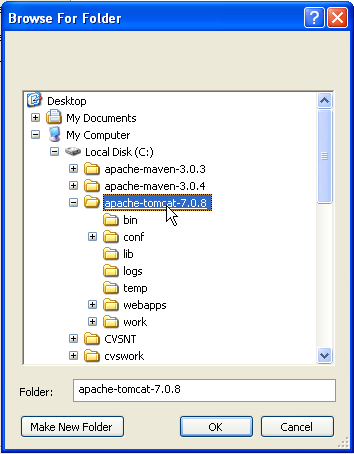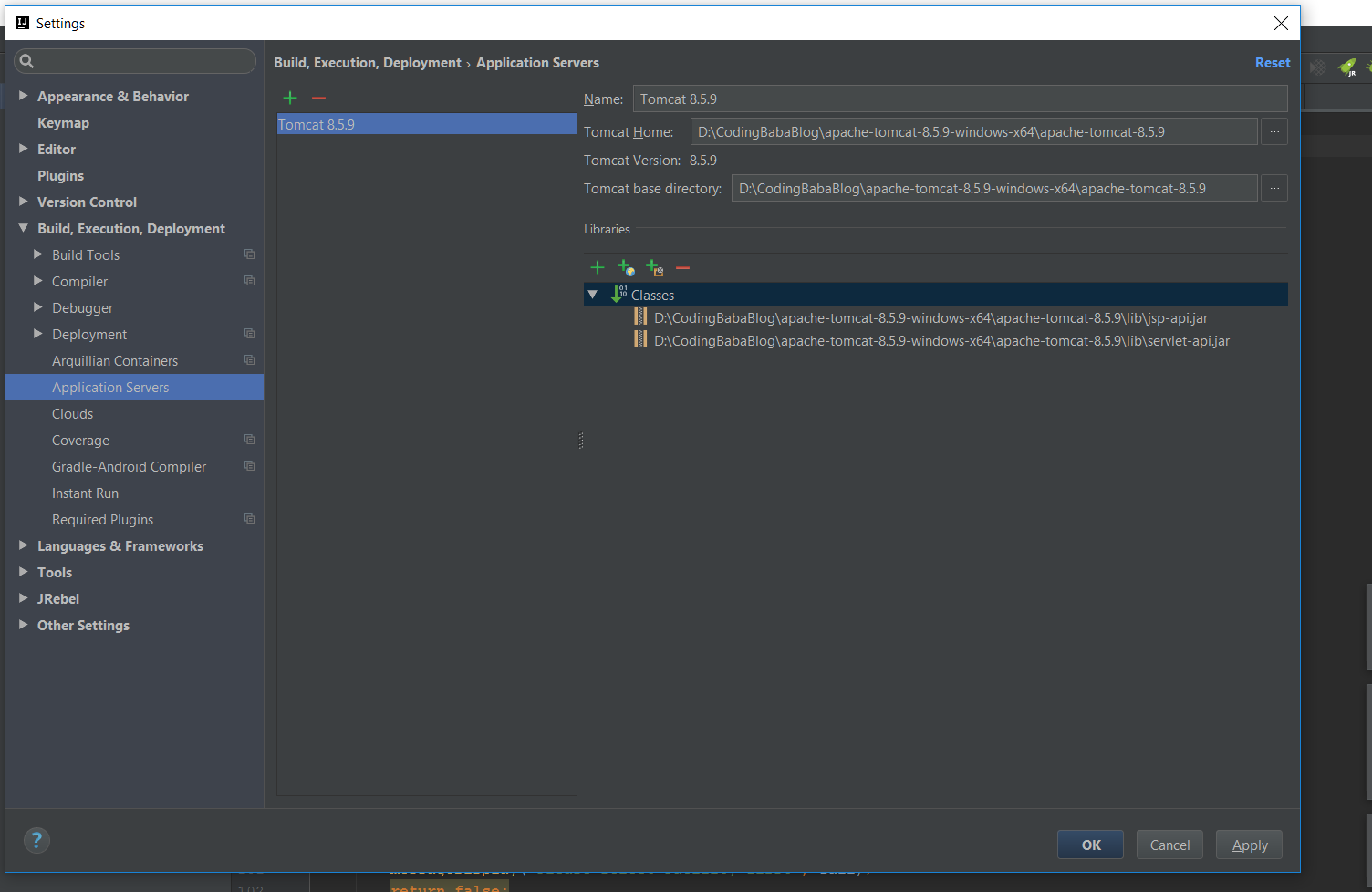

- #Configure tomcat how to
- #Configure tomcat install
- #Configure tomcat code
- #Configure tomcat password
- #Configure tomcat download

Once, you enter user credentials, you will find a page similar to below.
#Configure tomcat password
Now click on the ‘ Server Status‘ tab, it will prompt you to enter user credentials, enter username and password that you’ve added above in the config file. You can also allow tomcat access from the local network 192.168.56.0.

Then look for the following line and change it to this to allow tomcat access from IP address 192.168.56.10.

# vi /usr/local/tomcat9/webapps/manager/META-INF/context.xml Ĭonfigure Apache Tomcat User Roles Enable Remote Access to Tomcatīy default, access to the Manager and Host Manager section is restricted to the localhost only, to allow access to these pages, you need to mention IP address or network range in a configuration file. Similarly, you can also add an ‘ admin-gui‘ role to an admin user named ‘ admin‘ with a password ‘ adm!n‘ as shown below. # vi /usr/local/tomcat9/conf/tomcat-users.xml
#Configure tomcat code
Setup Tomcat User Accountsįor example, to assign the manager-gui role to a user named ‘ tecmint‘ with a password ‘ t$cm1n1‘, add the following line of code to the config file inside the section. To do so, you need to edit the ‘ tomcat-users.xml‘ file located under /usr/local/tomcat9/conf directory. You need to configure user accounts for admins and managers. Step 3: Configuring Apache Tomcat 9īy default you only able to access the default Tomcat page, to access admin and other sections like Server Status, Manager App and Host Manager. The default directory for Tomcat files will be in /usr/local/tomcat9, you can view the configuration files inside the conf folder, the main page that you have seen above, when you open your website on the 8080 port is in /usr/local/tomcat9/webapps/ROOT/. Now to open Tomcat from your browser, go to your IP or domain with the 8080 port (because Tomcat will always run on the 8080 port) as an example: :8080, replace with your IP or domain. Using CLASSPATH: /usr/local/tomcat9/bin/bootstrap.jar:/usr/local/tomcat9/bin/tomcat-juli.jar Using CATALINA_TMPDIR: /usr/local/tomcat9/temp Sample Output Using CATALINA_BASE: /usr/local/tomcat9 Now we all set to start the tomcat web server using the scripts provided by the tomcat package. # echo "export CATALINA_HOME="/usr/local/tomcat9"" > ~/.bashrc Note: Replace the version number above with the latest version available if it was different.īefore starting the Tomcat Service, configure a CATALINA_HOME environment variable in your system using the following command.
#Configure tomcat download
Now download the latest version of Apache Tomcat 9, using following wget command and set up it as shown. If you want to make a cross-check, head over to following Apache download page and check if there is a newer version available. 9.0.26) is the most recent stable version at the time of writing this article. OpenJDK 64-Bit Server VM 18.9 (build 11.0.4+11-LTS, mixed mode, sharing)Īfter installing JAVA on the system, now it’s time to download the latest version of Apache Tomcat (i.e. OpenJDK Runtime Environment 18.9 (build 11.0.4+11-LTS) Sample Output openjdk version " 11.0.4" LTS Once Java installed, you can verify the newly installed JAVA version running the following command on your system.
#Configure tomcat install
# yum install java-11-openjdk-devel #install JDK 11 # yum install java-1.8.0-openjdk-devel #install JDK 8 If not, install the latest version of JAVA or use the following yum command to install available Java from the default repositories. Step 1: Installing and Configuring Javaīefore heading up for the Tomcat installation, make sure you must have JAVA installed on your Linux box to run Tomcat.
#Configure tomcat how to
This article will walk you throughout the installation of Apache Tomcat 9 on RHEL/CentOS 8/7/6.įor Ubuntu, follow How to Install Apache Tomcat in Ubuntu. Apache Tomcat (earlier known as Jakarta Tomcat) is an open-source web server developed by Apache Foundation to provide a pure Java HTTP server, which will enable you to run Java files easily, which means that Tomcat is not a normal server like Apache or Nginx, because its main goal is to provide a good web environment to run Java applications only unlike other normal web servers.


 0 kommentar(er)
0 kommentar(er)
